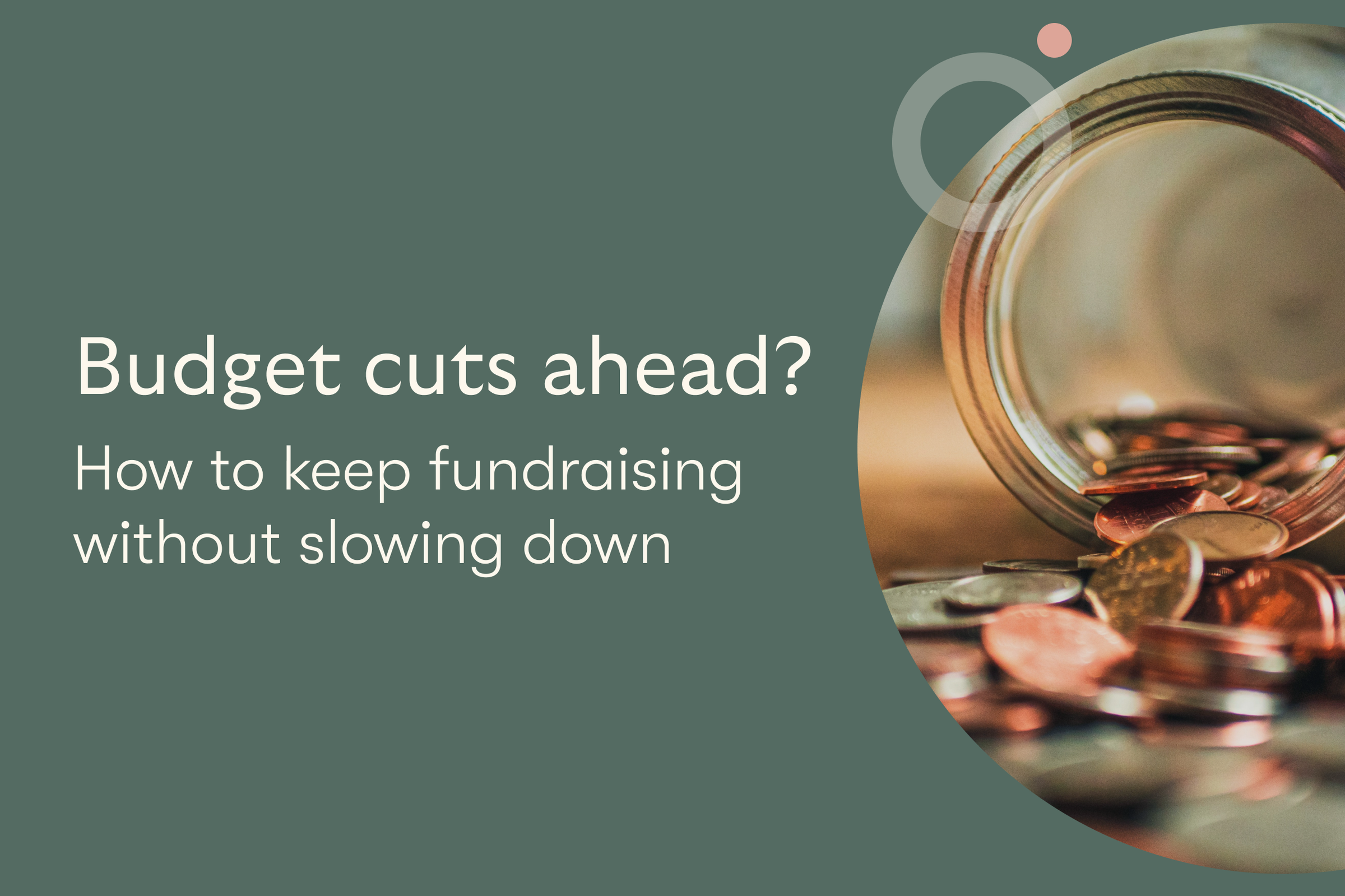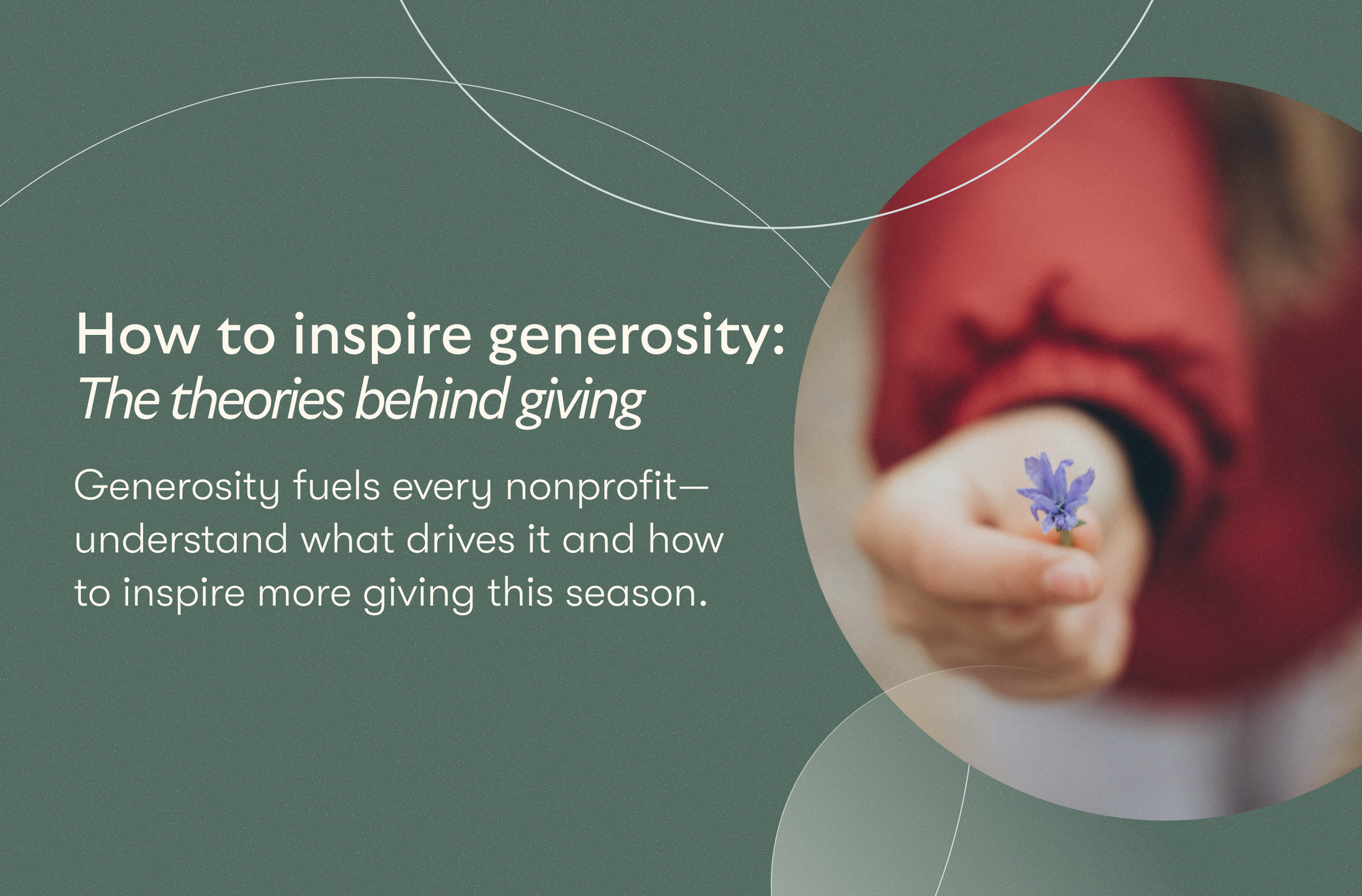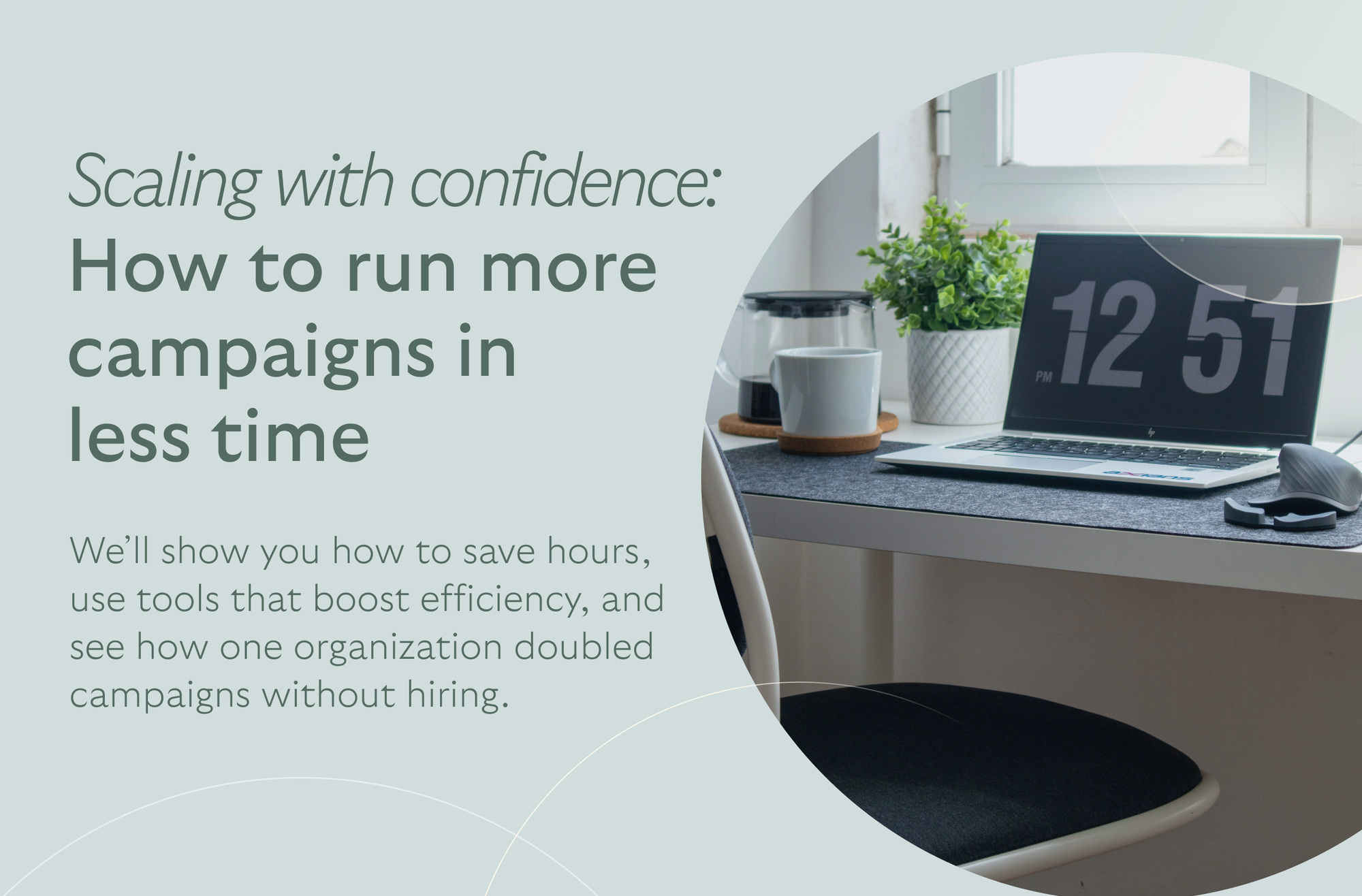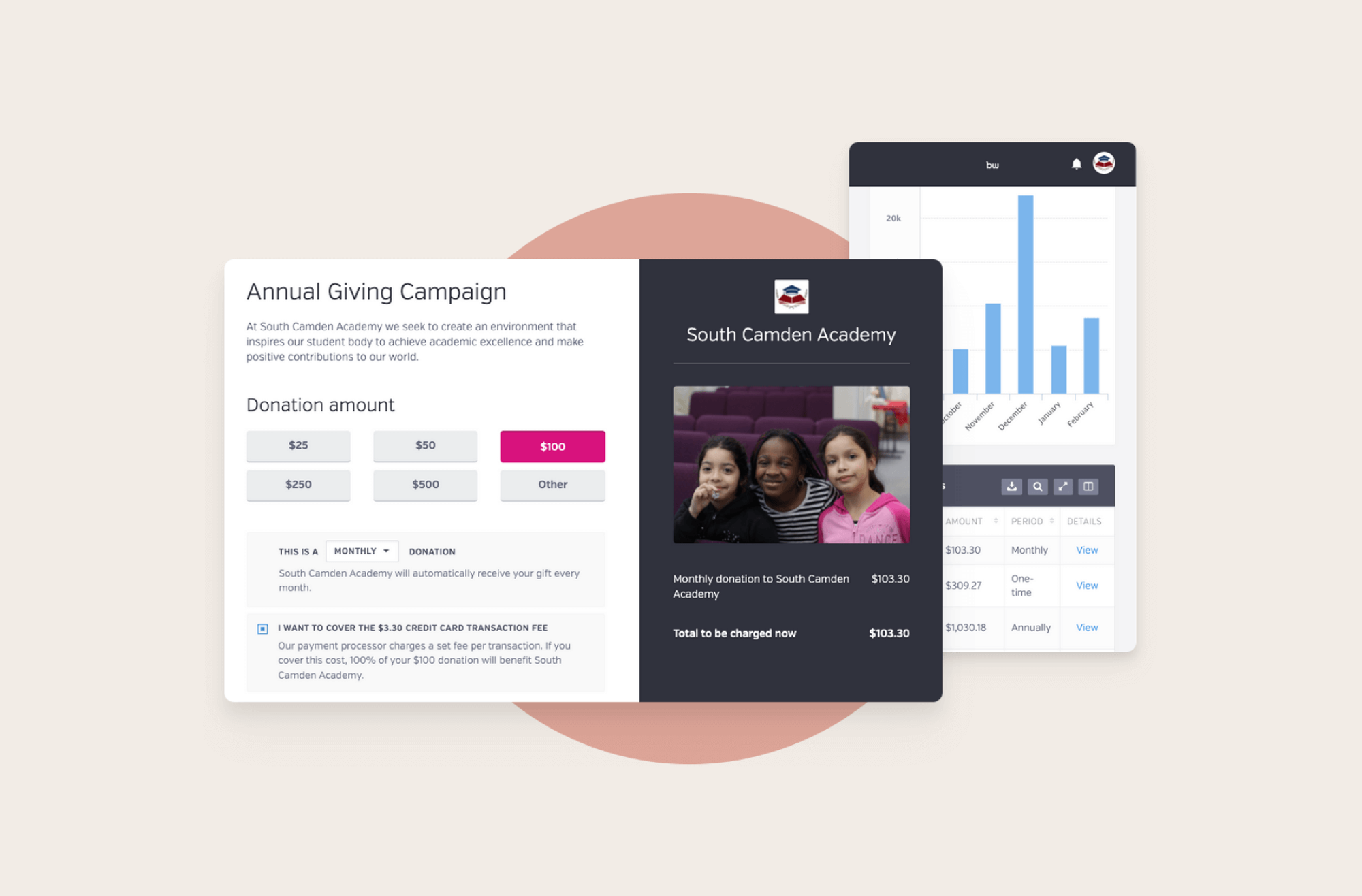Video Integration — boost the buzz around your online fundraising campaign
Time-saving – thoughtful automations save dozens of hours over your campaign
One-Click Checkout — our system will automatically charge the lucky winner
Text Message Notifications — keep your bidders engaged with text message notifications
Budget Cuts Ahead? How to Keep Fundraising without Slowing Down
By Colin Hunter

If your nonprofit faces budget cuts, you're probably wondering how to keep fundraising without losing momentum.
A smaller fundraising budget doesn't necessarily mean fewer donations or less impact. Instead, let’s get creative and use your existing resources more innovatively. The key is to adjust your fundraising plans, not abandon them.
So, how do you keep the donations coming in when spending has to go down? Let’s find out.
1. Start by Knowing What’s Been Cut
More than two-thirds (around 68%) of nonprofits expect to cut back on programs or services in the next year. That’s a big number, and it shows how common budget shortfalls might become.
If your organization is preparing for this, you’re not alone. But before making any changes to your fundraising plans, it’s important to pause and figure out what could be affected.
Look at Areas That Might Be Trimmed
Budget cuts don’t always affect every part of a nonprofit in the same way. Some teams might lose staff, others might need to scale back programs, and marketing, software tools, or event planning could also be affected.
Each area plays a different role in how you raise funds. A tighter fundraising budget for nonprofits means there’s no room to guess.
Think About the Impact
Don’t just expect cuts, get specific. Look at how much might be taken from each area.
Will you still have enough help? Are there tools you might lose? Is your budget for a fundraising event likely to shrink? Write it out. Seeing it clearly will help you plan better.
Why This Step Matters
If you don’t know what might be affected, it’s easy to make rushed decisions. But when you know what areas will likely change, you can start planning low-cost fundraising ideas for nonprofit organizations that fit your new situation.
Some things could be replaced or scaled back. That only works if you know what you're dealing with.
Quick Tip
Ask your team or board to review the current budget together. Even small cuts could have a big effect once they’re in place.
2. Don’t Cut Fundraising—Cut the Extras
Nonprofits typically allocate only 5–15% of their budget to marketing and outreach, yet this is often one of the first areas to see cuts during tough times.
It’s easy to think of fundraising and marketing as extras, but they’re not. Cutting them could slow down donations and hurt your long-term growth.
Keep Fundraising at the Center
When your fundraising budget is tight, it might seem smart to pause campaigns or delay outreach. But that move can cost you later. If people don’t hear from you, they won’t donate.
Keeping your name in front of donors is still important, even if you have to change how you do it. Keep your fundraising efforts going, just do them differently.
Where You Can Scale Back Instead
You don’t need to shut down your fundraising. Instead, look for the extras that can be trimmed.
Do you really need printed mailers, or can you switch to email? Can you reduce event rentals by using donated spaces? Paid ads can be expensive; try organic social media or email newsletters instead.
These are the kinds of low-cost fundraising ideas that help you stay visible without stretching your budget too far.
Focus on What Still Works
Look at past fundraising efforts and see which ones gave the best return. Maybe a small online campaign outperformed a big in-person event.
If so, shift your time and energy there. Cutting costs doesn’t mean cutting success. It means focusing on what gives you the most back.
Think Creatively, Not Quietly
Instead of going quiet, switch gears. Try a digital raffle, peer-to-peer campaign, or donation page that’s easy to share. Talk to your volunteers and ask for help spreading the word.
You may not have the same budget, but you still have your mission and community.
Quick Tip
Keep a short list of things that can be paused without hurting your donor relationships. Save those cuts for last. Let your outreach stay strong, even if your spending goes down.
3. Try What’s Free and Works Online
Tight budgets don’t mean you have to stop fundraising. It’s about making small shifts that keep your outreach going. Many of these tools work well for nonprofits, especially when the fundraising budget is limited.
BetterWorld can help you stay active without spending more.
Use Free Online Donation Tools
Some platforms let you set up online donation forms at no cost. You can collect one-time or recurring gifts without needing a full website.
These forms are easy to share in emails, on social media, or through text. If your fundraising event budget is low this year, focus on these smaller, low-effort campaigns that still bring in support.
Email Still Works—And It's Free
Email updates are a great way to keep your supporters in the loop. Many free email platforms offer basic plans with enough features for smaller nonprofits.
Send updates, share stories, and add donation links. Keeping your name in their inbox costs nothing, and it’s more personal than social posts alone.
Host Online Events Without the Expense
You don’t need a fancy venue or a big production. Host a virtual event with BetterWorld’s Free Virtual Event Tool for Nonprofits.
Ask a board member to speak, share a program update, or highlight a success story. You can even add a donation link to the stream. These are simple, low-cost fundraising ideas for nonprofit organizations that keep people engaged without needing a large setup.
Try Text-to-Give or QR Codes
There are free or low-cost tools that collect donations through text messages or QR codes. Place these on your social media pages, emails, or posters at local businesses. It gives people a fast and easy way to give—even if they’re just passing by.
Make the Most of What You Already Have
Look at your current tools. Some platforms offer free features you’re not using yet, like donor thank-you emails, analytics, or mobile-friendly forms.
Take a few minutes to explore your settings. You might find something helpful that’s already included.
Quick Tip
Tight on budget? Try free fundraising with BetterWorld. From auctions to events, donation forms to ticketing, you’ll find everything you need to raise funds—all in one place.
Our Online Fundraising Software for Nonprofits helps you collect donations through different tools, so you’re never stuck. With our Donation Forms, you can even set up recurring giving to grow your donations over time.
And don’t forget our Modern Fundraising Tools. You can launch a campaign and start raising money in just five minutes. Pick the method that works best for your organization and customize it your way.
The best part? It’s completely free, and you keep every penny you raise.
4. Use People, Not Paid Ads
About 88% of people say they trust recommendations from people they know more than any type of marketing. That says a lot.
Instead of pouring money into ads, let your team, volunteers, and supporters do the talking. Their voices often carry more weight, and they don’t cost anything.
Peer-to-Peer Fundraising Brings in New Donors
Peer-to-peer fundraising is simple. Supporters set up their own mini-campaigns to ask their friends and family to give. These small efforts can yield big results.
In fact, 80% of donors acquired through peer-to-peer fundraising are new to the cause. So, it’s not just about raising money, it’s about growing your reach.
Try Peer-to-Peer Fundraising with BetterWorld for Free. Request a demo now to find out more!
Your Team Is a Bigger Asset Than You Think
Ask board members, staff, and volunteers to help spread the word. They can post on social media, email their networks, or talk to local groups.
Some might even help with planning small events or writing personal thank-you notes. It’s all about using the connections already close to your mission.
Volunteers Can Do More Than Just Help at Events
Even if your budget for a fundraising event is shrinking, you can still plan something small and let volunteers handle the setup, outreach, or follow-up.
You don’t need to spend a lot—just get creative with what’s already around you. These low-cost fundraising ideas are easier to manage with the right people behind you.
Quick Tip
Make a short guide or toolkit with talking points, images, and donation links. Share it with your team so they feel ready to talk about your mission. The easier you make it for them to help, the more likely they will.
5. Stick With the Donors You Already Have
Holding onto your current donors costs less than trying to find new ones. That’s a fact. Most first-time donors don’t give again, but donors who give more than once are likelier to stick around.
It usually costs 10 to 20 times more to bring in a new donor than to get support again from someone who already gives.
So, when your fundraising budget might be tighter than usual, it makes more sense to focus on the people who already support you.
Start With a Simple Thank You
A small thank-you note or email goes a long way. People want to know that their support matters. Whether someone gave $10 or $1,000, a quick message of thanks helps them feel part of your work.
You don’t need a fancy card or printed newsletter. Even a short phone call from a staff member or volunteer can make a difference.
Show What Their Gift Did
Share the results of their support. A few photos, a short story, or a number that shows progress helps connect the donor to your mission. These updates build trust.
Donors are more likely to keep giving when they see what their gift has helped make possible. It’s one of the easiest low-cost fundraising ideas for nonprofit organizations to keep your supporters engaged.
Ask for Feedback and Involvement
Reach out to donors and ask them how they’d like to stay involved. Maybe they want updates, or perhaps they want to volunteer. Give them options.
The more connected they feel, the more likely they’ll stay with you through a rough patch.
Don’t Skip Regular Check-Ins
Even if you don’t have a campaign running, keep in touch. A short update every month or two helps your organization stay in their minds. When you do need to ask for help, they won’t be surprised. They’ll be ready.
Quick Tip
Create a short donor list and assign each to a board member or team lead.
Divide the work. Regular check-ins don’t take much time, but they can bring steady support even when your fundraising budget and nonprofit plans are scaled back.
6. Stay Active on Social Media
You might not have money for ads right now, but you still have something powerful—social media. It doesn’t cost a thing to post a photo, share a story, or go live for a few minutes.
And it works. In fact, 32% of donors say they’re most likely to give after seeing something on social media. That’s more than any other platform.
Start With What You Already Have
Scroll through your phone. Got a picture from a recent program? A short video clip from a team meeting? That’s content. You don’t need to stage anything. Use what’s real.
Tell your followers what’s happening in the moment, even if it’s just a behind-the-scenes update or a quick thank-you.
Let Others Carry the Message
Instead of trying to reach everyone yourself, let your followers help. Ask them to share your post or tag a friend. That’s how messages grow. It’s all about reach. Even a post with one photo and a short caption can travel far if the right people share it.
No Budget? No Problem
If you can’t print flyers or run paid campaigns, social media fills the gap. It’s a solid part of your low-cost fundraising ideas plan. And unlike big fundraising events, you don’t need to wait.
You can post today, tomorrow, and next week, whenever something worth sharing happens.
Quick Tip
Don’t worry about being perfect. Social media is more about being present than polished. One honest post often beats five scripted ones. Try different things. Watch what gets attention. Then keep going.
Staying online, staying visible, and staying real can help more than you think.
7. Pick Fundraisers That Cost Less but Raise More
If your fundraising budget is tighter than it used to be, the last thing you want is to plan a big event that will not bring in much money.
The good news is, you don’t need fancy venues or expensive materials to run a successful fundraiser. Some of the best ideas are simple, low-cost, and easy to repeat.
Start With an Online Raffle
Online raffles are quick to set up and don’t require much money. You can ask local businesses to donate items or services as prizes. Use BetterWorld’s Raffle and Giveaway software to host the raffle for free.
Sell tickets online and let people share the link with friends. It’s easy, and many groups have raised hundreds or even thousands this way, without needing to rent a space or hire anyone.
Try Donation Matching
Reach out to a local sponsor or a loyal donor who might agree to match donations up to a certain amount. Knowing their donation will go twice as far gives people an extra push to give.
Plus, there’s no added cost for you. It’s one of those low-cost fundraising ideas that often brings in new donors, too.
Virtual Events Still Work
Live-stream a short program update or a behind-the-scenes tour. Host a Q&A with your team or a small talent show. These don’t need to be high-end productions.
Use a phone, a stable connection, and a clear request for support. Add a donation link and let your supporters tune in from anywhere.
Quick Tip
Keep track of what works. Not every idea will be a hit, but once you find a few that raise well without costing much, you can bring them back anytime your fundraising budget or nonprofit plan needs a boost.
8. Get Help From the Community
When your fundraising budget is limited, your community can be a valuable support system.
Local businesses, schools, clubs, and even places of worship often look for ways to give back. Many are happy to help if you simply ask.
Start Local, Think Simple
Walk into a neighborhood coffee shop or email a local school. Let them know what you’re working on and ask if they’d be open to promoting your fundraiser.
Some may be willing to hang a flyer, share your campaign on social media, or offer a small donation. Others might want to host a mini event or match donations for a day.
Offer Something in Return
Even if your organization can’t pay, there are ways to say thanks. Offer to feature them on your social media or include their logo in your email newsletter.
A little visibility goes a long way for small businesses, and it helps them feel like part of your mission.
Involve Clubs and Youth Groups
High school clubs, scouting groups, or after-school programs are often looking for service projects. Invite them to help with your fundraiser or promote it through their networks.
It’s a win-win. They support a cause, and you get more hands and more reach.
Build Relationships, Not Just Donations
People are more likely to help again if the experience feels meaningful. Stay in touch with the people who support you. Send a thank-you note, invite them to your next event, or tag them in a thank-you post online.
These small actions can lead to lasting support, even after your fundraising budget and nonprofit challenges settle down.
Quick Tip
Instead of asking for donations or help promoting your campaign, encourage local businesses or supporters to host mini-fundraisers for your cause.
A coffee shop could run a “$1 per drink to charity” day. A school club could hold a small bake sale with proceeds going to your nonprofit. Give them a short info sheet, a donation link, and a few ideas to get started.
Let us help you raise more! Use BetterWorld’s free, easy fundraising tools!
9. Keep Testing and Adjusting
You don’t want to waste time or effort when your fundraising budget is tight. That’s why it helps to track how your efforts are doing.
Are your emails getting clicks? Is your social media bringing in donations? You don’t need paid tools to find out. Free platforms like Google Analytics, Facebook Insights, and email tools like Mailchimp can show you what’s getting attention and what’s not.
Be Willing to Switch Things Up
If something isn’t working, it’s okay to change direction. Maybe your last event didn’t bring in much, but a quick social media campaign did.
Or maybe people didn’t respond to your newsletter but donated after a volunteer shared a post. Use what works. Pause what doesn’t. You’re not locked in.
Try One Change at a Time
You don’t have to overhaul everything. Just try one change and see how it goes. That could be a new subject line in your emails or a posting at a different time on social media.
Small steps like these can give you helpful insights without adding extra pressure.
Build Your List of What Works
Every nonprofit is different. What works for someone else may not work for you. Start writing down what brings in donations, what your supporters respond to, and what gives you the best return with the least effort.
This list becomes your go-to guide for future planning, especially when exploring low-cost fundraising ideas.
Quick Tip
Set a reminder to review your fundraising activities once a month.
Take 30 minutes to look at your numbers and note any trends. Keeping things flexible helps you stretch your resources and adjust your plan before minor issues become bigger problems.
FAQs
Can free tools really help raise money?
Yes. Free tools like donation forms, email platforms, and social media can help you reach donors, collect gifts, and stay visible, without added costs.
How do I ask donors for help when budgets are tight?
Be honest. Share how cuts may affect your work and what their support can do. Keep the message clear, personal, and focused on impact.
Is social media enough for fundraising?
It’s a strong start. Social media helps you reach new people, share updates, and drive donations. Pair it with email or peer-to-peer to get better results.
How do we get the community involved?
Ask local businesses, schools, or clubs to host small fundraisers, promote your campaign, or donate goods or time. Make it easy for them to say yes.

Join 100,000+ amazing nonprofits, organizations, and fundraisers on BetterWorld

Let our FREE fundraising tools help you raise more funds with less effort








